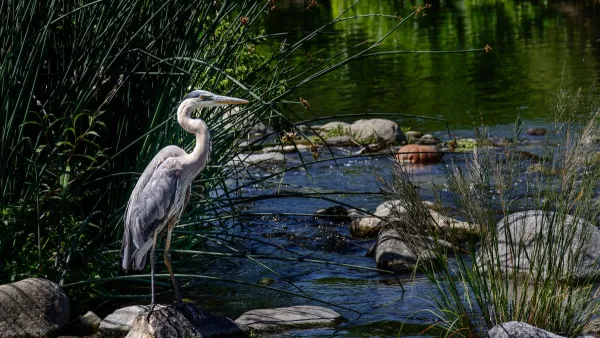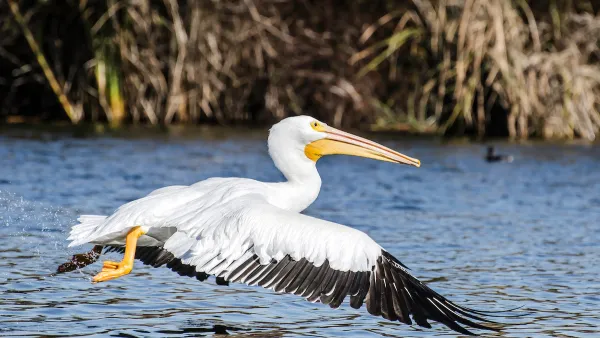From its mountain tributaries, to the San Fernando Valley, through Downtown, and across the basin into the Pacific Ocean, Christian MilNeil tells the story behind the ecological and recreation rehabilitation of the Los Angeles River.
Unarguably one of the region's most photographed and filmed landmarks, the Los Angeles River's miles of concrete-lined channels have appeared in numerous films, advertisements, and music videos. Now advocates are hoping to rehabilitate the river's post-apocalyptic appearance by tying in aspects of ecology and livability.
Christian MilNeil, writing for Grist, takes the reader on a four-part tour of the river, from its start in the mountains above the San Fernando Valley to its mouth in Long Beach. Perhaps most interesting are his comments regarding how residents and visitors to the city interact with their river, from the sprawling and busy Sepulveda Dam Recreation Area, where the unpaved river returns to its wild roots for a short stretch, to the lifeless Confluence Park in the Glassel Park neighborhood, near the tangle of highway interchange viaducts that fly over the historic confluence of the L.A. River and the Arroyo Seco.
Then there's the famed stretch just east of Downtown Los Angeles, with its art deco bridges, power lines, railroads, and near-complete isolation from the rest of the city. Here, many of the most interesting and largest plans to rehab the river are taking place. Plans include "re-wilding" the river with an unpaved bottom and lining its banks with parks and redevelopment. And though "[a]ll this sounds pretty good to sustainability advocates - and to a growing number of political leaders..., until Los Angeles embraces those broader changes...restoration efforts like the one at Tujunga Wash [in the San Fernando Valley] will end up spending more tax money...to achieve less."
Read more about the Los Angeles River in MilNeil's four-part series in Part 1, Part 2, Part 3, and Part 4.
FULL STORY: Los Angeles River checks into rehab

Analysis: Cybertruck Fatality Rate Far Exceeds That of Ford Pinto
The Tesla Cybertruck was recalled seven times last year.

National Parks Layoffs Will Cause Communities to Lose Billions
Thousands of essential park workers were laid off this week, just before the busy spring break season.

Retro-silient?: America’s First “Eco-burb,” The Woodlands Turns 50
A master-planned community north of Houston offers lessons on green infrastructure and resilient design, but falls short of its founder’s lofty affordability and walkability goals.

Test News Post 1
This is a summary

Analysis: Cybertruck Fatality Rate Far Exceeds That of Ford Pinto
The Tesla Cybertruck was recalled seven times last year.

Test News Headline 46
Test for the image on the front page.
Urban Design for Planners 1: Software Tools
This six-course series explores essential urban design concepts using open source software and equips planners with the tools they need to participate fully in the urban design process.
Planning for Universal Design
Learn the tools for implementing Universal Design in planning regulations.
EMC Planning Group, Inc.
Planetizen
Planetizen
Mpact (formerly Rail~Volution)
Great Falls Development Authority, Inc.
HUDs Office of Policy Development and Research
NYU Wagner Graduate School of Public Service



























